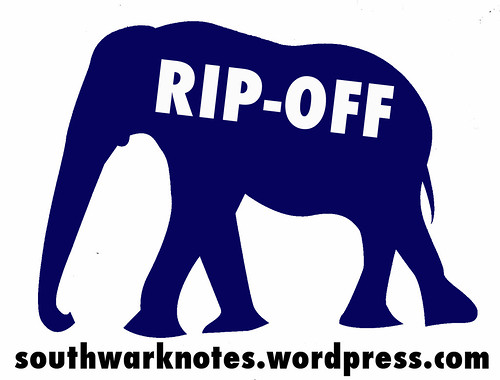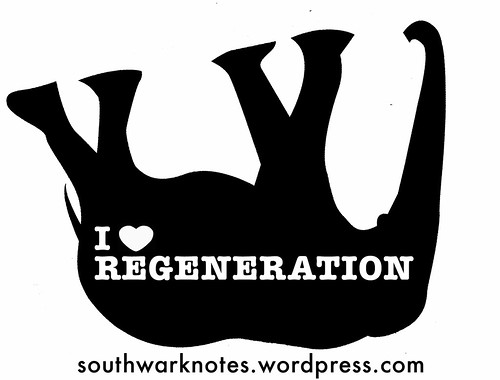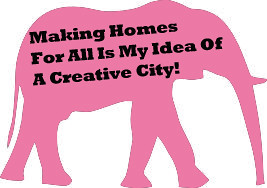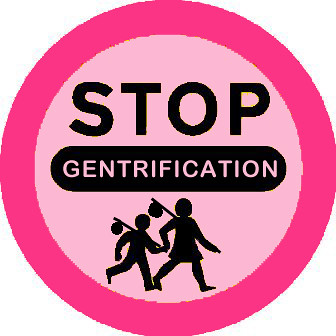HOW ARTISTS WORK FOR REGENERATION:
If we had time this page would be better and kick ass. Bit old most of it. We have more recent texts but little time to upload. You could do worse that check this collection of texts: http://aaaaarg.fail/collection/51c592356c3a0ede0b132000
• A classic tale from 1980′s New York:
The Fine Art of Gentrification
• A later tale from London:
Artists, Aestheticisation, Gentrification – David Ley
• A useful recent text:
Cultural Workers, Throw Down Your Tools, The Metropolis Is On Strike
The beginning of the last text is really good on how regeneration uses the ‘creative economy’ to create itself!
‘The question is not whether the creative class exists as such, but rather what effects are created through how it is described and called into being through forms of governance and social action based upon these claims. Planning and shaping the city around a certain conceptualisation of the creative potentiality of labour, or the potentiality of creativity put to work, is not an unprecedented or unique development, but rather is the latest example of capital’s attempt to continually valorise itself through recuperating the energies of those organising against it.‘

• Another great text from the book No Reservations: Housing, Space and Class Struggle (1985). This chapter is called ‘Occupation and The Art of Gentrification‘. Download Occupation and The Art of Gentrification

• Here is the chapter ‘Art In The Arms of Power‘ from Sharon Zukin’s great book ‘Loft Living‘ on the gentrification of New York in the 1980′s. In this part she is talking about how changes in power, wealth and thus the economic set-up of society created the idea and the privilege notion of ‘the artist’ and how such a position feeds back into the power and the wealth. Download Zukin Art Power here!
‘It is inconceivable that living “like an artist” would have exerted any appeal to segments of the middle class if significant changes in the social position of art and artists had not taken place since the end of World War II. From a marginal and often elitist aesthetic concern, art moved into a central position in the cultural symbolism of an increasingly materialistic world. Artists enjoyed more visibility in the mass medfa as well as- at prestigious social gatherings, an1fsince the most prominent artists were also selling their work at the highest prices, it is reasonable to suppose that “their visibility was connected in some measure, with their commercial viability. But at the same time, public discussion transformed policy toward the arts into a national priority. Just as artists’ prices and their dealers’ commissions depended on which country “won” the Venice Biennale, so in a larger sense did national prestige. Artists began to be regarded as social assets rather than bohemians, and their work acquired important’
Later on, she writes about the familiar cycle of artists moving to an area because the rents are cheap and the ambience they create eventually makes the area more attractive to more wealthy people thus pricing out the artists. It’s not as simple as that and she points up lots of the good and bad intentions from artists that play out in this cycle of gentrification. The whole of Zukin’s ‘Loft Living‘is worth reading so we put it up here. Download here!! (It’s 27MB)

• Two good articles by Dutch writer Merijn Oudenampsen about Amsterdam’s municipal use of the notion of ‘the creative’ and the alleged ‘creative economy’ and how wielded with a re-branding of your city signals the ravages of gentrification to come:
Download: Extreme-Makeover
Download: Back-to-the-Future-of-the-Creative-City

• Martha Rosler‘s complete articles entitled ‘Culture Class: Art, Creativity, Urbanism‘ are amazing on all the above themes of public art, the problem of ‘the creative class’, the easy incorporation of artists into neo-liberal restructuring of the city (space, work, leisure etc) and she’s angry! Download!
Here is a classic cartoon from 1921 New York, having made the area nice and welcoming for the rich, the local artist is evicted as the area is priced up by developments. This classic cycle continues today in London, New York, Paris, Amsterdam etc etc. Southwark Notes asked some artists in Peckham recently about why the area was so full of artists now. They said ‘we, all used to be in the East End but it got too expensive. Peckham was cheaper‘. The next obvious point to make seemed a little bit too nasty, so we left it at that. Coming soon – artists move to Croydon and Basildon chasing cheap rents!
———————————————————————–*-)








